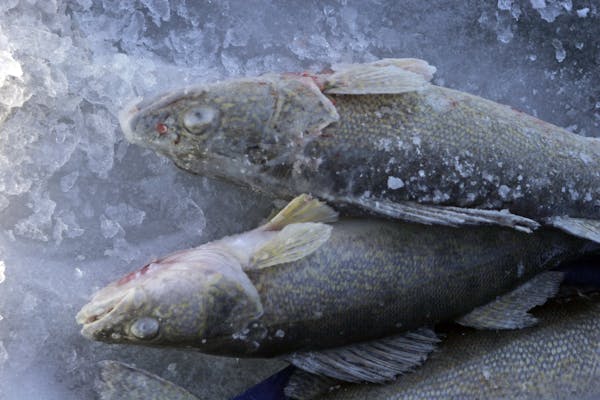The bobwhite hunting in Oklahoma's Quail Alley hasn't been this good since 2009.
Texas, Arkansas, Missouri and southern Kansas, too, are booming again with quail. Even in Iowa, the quail population is the best it's been in 30 years.
With the resurgence of birds because of drought recovery and friendly grassland initiatives, Minnesota-based Quail Forever — a division of Pheasants Forever — is enjoying a bounce in membership and habitat projects.
"The birds have exploded in a lot of these places," said Jared Wiklund, a public relations manager in St. Paul for the upland conservation group.
With Quail Forever growing faster than its parent organization in terms of new chapters and new members, the comeback will be a topic next month in Minneapolis when 30,000 wingshooters from around the country gather at the Minneapolis Convention Center for the National Pheasant Fest and Quail Classic.
If the 30,000-person attendance goal is achieved Feb. 17-19, it would break the record set in 2008 just shy of that number when the event came to St. Paul. On average, the show is held in the Twin Cities once every four or five years.
Bob St. Pierre, vice president of marketing for Pheasants Forever, said Quail Forever membership has grown to a record 16,800, including five new chapters in just the past two months. That pales in comparison to Pheasants Forever's overall membership of 150,000, but in the past three years, the organization has added four staff positions to cover quail members in California and Nevada; Oklahoma and Texas; Missouri; Arkansas and Louisiana and Florida-Georgia.
St. Pierre said the quail hunters are signing on for reasons antithetical to the crisis mode that stirred Star Tribune columnist Dennis Anderson and friends to found Pheasants Forever in 1982 (when Anderson wrote for the St. Paul Pioneer Press). Then it was a call to action to reverse upland habitat loss and alarming declines in pheasant populations.
Now — with quail — excitement over an abundance of the birds is the energy being tapped for renewed interest, conservation and habitat improvement. Wiklund said a long bust period for quail populations essentially robbed the sport of hunters.
"Quail hunters still haven't bounced back like quail," he said.
In Oklahoma, for instance, quail hunting participation peaked in 1987 with 120,500 estimated shooters. In a record harvest in 1992, 3.3 million birds were killed. That compares to 2011's lowly harvest of 109,000 quail in Oklahoma. Since then, the number of hunters has trended upward and 2015's harvest reached 409,000 quail, according to Kyle Johnson, quail habitat biologist for the Oklahoma Department of Wildlife Conservation.
Good for pheasants
Minnesota, South Dakota, North Dakota, Wisconsin and Michigan are pheasant-only states loaded with Pheasants Forever chapters. Pheasant hunters in Nebraska and Illinois also contribute heavily to the organization's compound membership of 150,000 conservationists. Why should they care about quail?
"It really strengthens us politically and makes us more attractive as a corporate partner," St. Pierre said. "We represent the biggest collection of upland hunters in the country."
Where the ringneck range dries up at the northern boundary of Oklahoma, quail country extends the nonprofit's geographic reach throughout the nation's southern tier. In crucial federal lobbying campaigns such as the Farm Bill, the sister organization provides important constituencies in Southern California, Texas and southeastern states such as Georgia, Alabama, Florida, Tennessee and South Carolina.
"It makes our voice louder in Washington, D.C.," St. Pierre said. "The pheasant hunter's best friend is the next Farm Bill."
Moreover, he said, the country's six species of quail extend all the way up the West Coast, into Idaho and across parts of Arizona and New Mexico. With Quail Forever chapters in each of those states, the umbrella also makes Pheasants Forever a more attractive partner to corporations that contribute to conservation projects.
For the fiscal year 2016 alone, Pheasants Forever spent $21.6 million on land acquisitions and $6.9 million on public awareness and education.
Filling a void
Quail Forever was founded in August 2005 as an alternative to financially troubled Quail Unlimited. What set the two organizations apart was Quail Forever's organizational model granting local chapters 100 percent of funds raised locally for habitat improvement and public education.
By December 2012, the scales tipped entirely toward Quail Forever. That's when Pheasants Forever acquired Quail Unlimited's mailing list in a deal that also retired the name, logo and website of the previous group.
In a parting letter to Quail Unlimited's members, the group's president, Bill E. Bowles recommended Quail Forever "as the future of quail conservation in America." Various post-mortems written about South Carolina-based Quail Unlimited cited member frustration over a bloated administration soaking up funds raised at the local level.
Wiklund said quail hunters are responding favorably to a system that's tilted toward the rank and file.
For the nine-year period that ended in mid-2016, Quail Forever habitat and education work soared more than tenfold, from $132,490 in 2007 to $1.06 million in 2016.
Pheasants Forever grew much faster in its first 10 years, but it was drawing on an estimated base of 2 million hunters. The universe of quail hunters in the U.S. is estimated at about 400,000 strong.
Al Shaver, voice of the North Stars, dies at 96
Lions agree to contract extensions with St. Brown and Sewell worth combined $200M, AP source says
West Virginia says it will appeal ruling that allowed transgender teen athlete to compete

